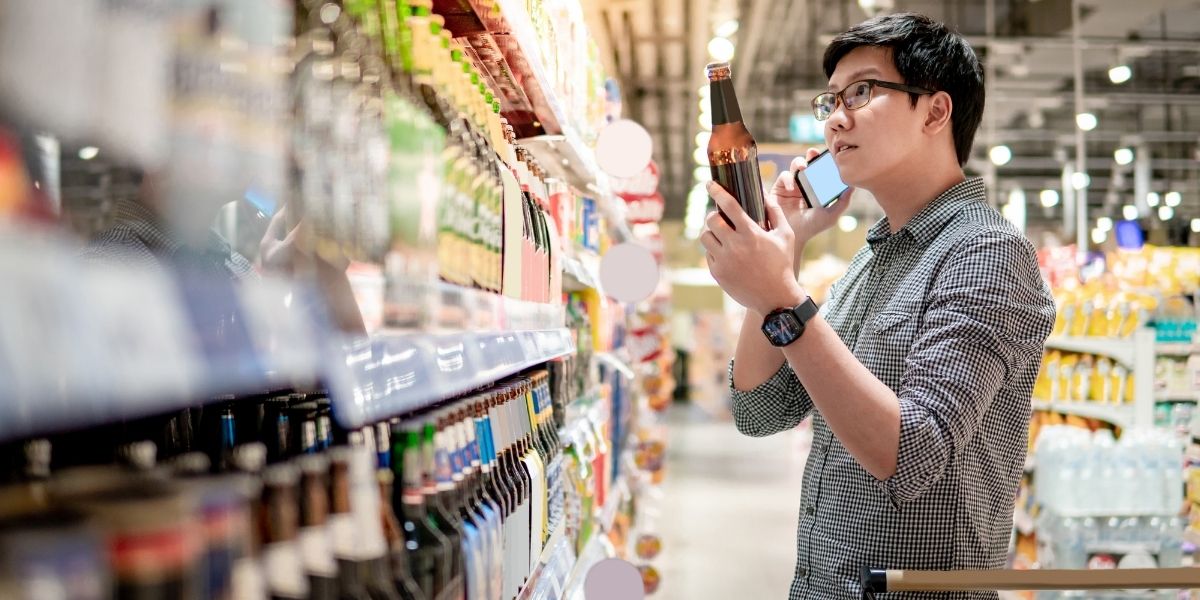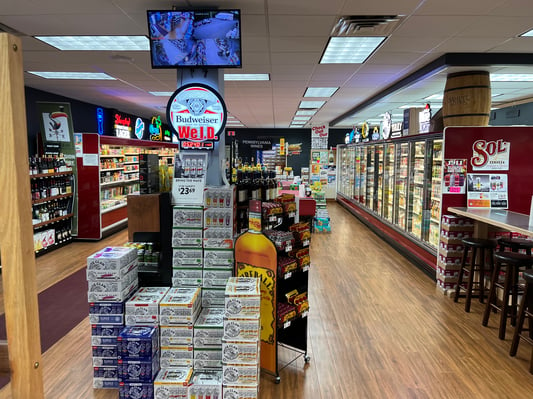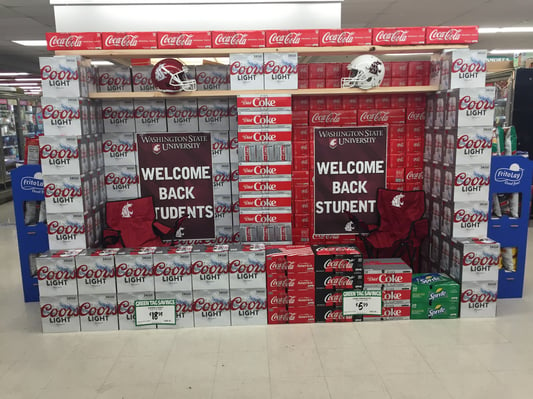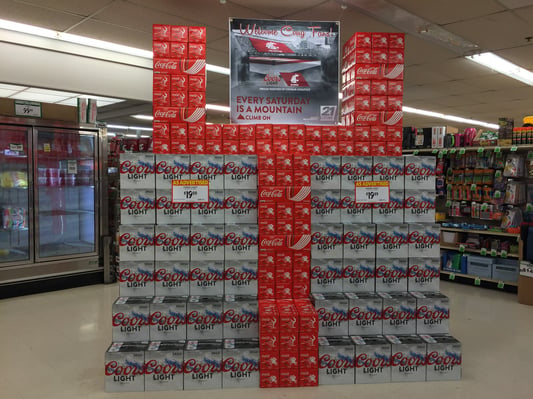Help Isom IGA recover from devasting floods

1 min read
5 Best Practices For Increasing Summer Alcohol Sales
Written by Jessica Vician
Jun 1, 2022
When times are good, Americans drink alcohol. When times are bad, they drink more. Most IGA stores saw huge increases in adult beverage sales during the height of COVID-19, with some stores topping 20 percent or more of total sales in the category, according to IGA CEO John Ross. The industry predicts the sales will continue to be strong this year and next.
We spoke to IGA retailers and industry partners for proven best practices and category insights, including ideal assortments, shopper behavior trends, and cross-merchandising tips to help boost summer alcohol sales now, and grow share throughout the year.
1. Make A Plan To Differentiate
Any retailer can sell name-brand beer and wine. But if shoppers don’t know why they should choose your store over the competition, the only way you can compete is on price. To avoid the price war, plan to show off your points of difference.
Jim Shook, owner of Lake Region IGA in Hawley, Pennsylvania, averages about $1.2 million in annual alcohol sales, with beers making up about 90 percent of that. Shook chose to differentiate his assortment in beer, picking unique varieties, local brands, and expanded flavors to make his store a beer destination. And by focusing on industry growth categories like craft, seltzers, and innovative flavors, rather than wine or alcohol, he stands out compared to local stores.
“Across the parking lot from our store—about 150 yards away—is a wine and alcohol center that's owned by the Pennsylvania State Liquor Control Board. So, we really can't compete with them,” Shook said. “But on beer, we can stand out and lead the market.”
Shook has stocked his store with an estimated 700–1,000 varieties of beer, from national brands to local microbreweries, to corner the market.
“We carry as much local as we can from local and craft breweries, like the Wallenpaupack Brewing Company located across the street, all the way down to Pottsville, Pennsylvania for Yuengling Lager.”
Locals and vacationers alike know Shook's store is a true destination for holiday entertaining, summer barbecues, and a day at the lake. The store is about a half mile from Lake Wallenpaupack, a summer vacation destination, and Lake Region IGA's sales will go up 40 percent for the summer months.
 Lake Region IGA in Hawley, Pennsylvania features nearly 1,000 varieties of beer.
Lake Region IGA in Hawley, Pennsylvania features nearly 1,000 varieties of beer.
2. Ensure Your Suppliers Are Working The Assortment
Across the country in Pullman, Washington, Dissmore’s IGA serves many Washington State University students and employees in the college town. For Store Owner Archie McGregor, understanding local demand and working with his bottler to keep his assortment up to date is key to maintaining strong margins.
Alcohol makes up about 20 percent of his store sales, with beer running just over half compared to wine and alcohol. McGregor pays attention to his assortment and adjusts to anticipate changes in shopper demand, but Ross recommends retailers communicate those changes to their distributors to ensure the supply is available for the season.
“It might seem obvious to retailers to promote more citrus beers and fruit-flavored hard alcohols in the summer, like Archie does, but often bottlers don’t stay on top of assortment changes like they should,” Ross said. “Our distributors are dealing with labor issues and supply chain problems, which means they may not be on top of customer demand at the local level like we would hope. Alcohol sets can age faster than shopper demand changes.
To really grow sales, you have to stay on top of what consumers want, and make sure your supplier is constantly working the set.”
3. Capitalize On Trends
Retailers need to know which categories are growing nationally, which are lagging, and which are disappearing. Your bottler should have this data, Ross said, but he is quick to point out that just knowing the numbers is only half the challenge.
“You really need to understand why demand is changing,” Ross said. “Manufacturers have huge research teams who track changes in shopper behavior. Understanding why consumers are buying more of a category (like seltzers) and less of others (commodity beers) helps you to focus your store on their needs. That’s the way to really accelerate share growth.”
For example, in the last five years, consumer preferences for lower calorie alcoholic beverages, especially among Millennials and the working-class population, has been growing rapidly. The hard seltzer market, part of that lower calorie subcategory, is expected to reach $57.34 billion by 2030 (22.9 percent CAGR), according to a report from Grand View Research, Inc.
For a classic beer drinker, it might be hard to understand why shoppers are going for seltzers, but with females an increasingly larger part of the adult beverage consumer profile—57 percent, according to a 2021 Gallup poll—it makes sense, Ross said. "Females are a huge part of the market now, and they're quicker to try new flavors and are highly motivated by lower calorie, or 'healthier' beverage profiles." Understanding the consumer's attempt to make healthier choices not only provides insight as to why hard seltzer has become more popular; it provides direction on how to merchandise the product.
“Seltzers are so popular right now. They pretty much sell out over wine and they're real close to selling out of beer, as far as a percentage of sales during the summertime. It's crazy how the seltzers took off and continue to grow.” Shook said. McGregor echoed Shook’s observations. “I also have success with the hard seltzers, hard ciders, and twisted teas. A lot of people who are gluten intolerant drink these. They are preferred and I have a greater margin on them.”
The "better for you" trend goes beyond lower calorie beverages, extending to gluten-free, as McGregor noted, as well as organic, sustainable, and local features. That means a varied assortment that includes organic wines like Fresh Vine, a new Red Oval partner that offers wines with less sugar, calories, and carbs, along with gluten-free seltzers and hard alcohols can attract customers looking for summer refreshment with a healthier twist. "These organic wines and seltzers are leading the industry right now, and female consumption is a key driver," Ross said.
It is a huge opportunity to rethink your signage, messaging in ads, and especially social media. Shoppers want smarter, healthier choices in everything they buy. Telling people you have these new adult beverage solutions that meet that need and making them a destination in your store will grow sales.
 Lake Region IGA showcases their hard seltzer collection.
Lake Region IGA showcases their hard seltzer collection.
4. Cross-Merchandise For Added Sales
Retailers tend to merchandise beer and wine as categories unto themselves, but like most things in stores today, alcohol is part of the meal choices that shoppers make. Asking, "What items from other departments would pair well with this alcohol?" gives you latitude to expand offerings in other aisles and grow average basket significantly.
There are obvious examples, like putting a stack out of wine in the cheese department. Other insights are less intuitive. Consider seltzers and fresh fruit: Numerator Insights Grocery data provided by Anheuser-Busch shows a quarter of all shopper baskets put Bud Light Seltzer and fruit together, and also revealed massive increases in to basket sales: an incremental $63 per purchase addition, according to the same data.
Thinking of these new beverages as an add-on to produce sales allows you to do creative marketing online and in store. McGregor said they usually put alcohol displays in the produce department near the citrus fruits: Corona and lime, Blue Moon and oranges, etc. to remind shoppers to add to their baskets. Adding a handwritten “Don’t forget the limes” sign to your Corona display is something any store can do to drive add-on sales.
The Dissmore’s IGA team also builds hard cider displays by the apples, places chips and coolers in the alcohol aisle, and always keeps a stack of wine in the check stands. Think about brand pairings as well. The Italian beer Peroni stacked in the dry pasta and bottled sauce aisle is a great way to make spaghetti meals more fun while increasing basket size. And every avocado or guacamole display should have a stack of Mexican beers and limes next to it.
 A Dissmore's IGA display cross-merchandises Frito-Lay chips with Coors Light and Coca-Cola products.
A Dissmore's IGA display cross-merchandises Frito-Lay chips with Coors Light and Coca-Cola products.
5. Pay Attention To Package-Size Purchasing Changes
Before COVID, shoppers were trimming down the number of beverages they bought to spend more money on IPAs, craft, and specialty imports. Since COVID hit, larger pack sizes are back in flavor—27 percent of grocery shoppers are buying larger pack sizes, according to Heineken USA’s Consumer Pulse Survey. Shopper behavior shifted from a single user and higher volume drinking to mid- and higher income entertaining. Heineken reports that 24-packs of import beers attract shoppers in households earning $100,000.
 Dissmore's IGA football-themed beer display celebrates Washington State University and features large pack sizes.
Dissmore's IGA football-themed beer display celebrates Washington State University and features large pack sizes.
“If you are still envisioning your shopper in a dirty tank top guzzling domestic lager in front of the TV, you are totally missing the growth opportunity in adult beverages,” Ross said. “Alcohol is part of the American consumption pattern for almost every age, demographic, and gender. They want a better experience, they want to learn about new flavors and new solutions, and they want to buy local. What better opportunity for independent retailers to serve emerging shopper needs and grow sales!”
No Comments Yet
Let us know what you think